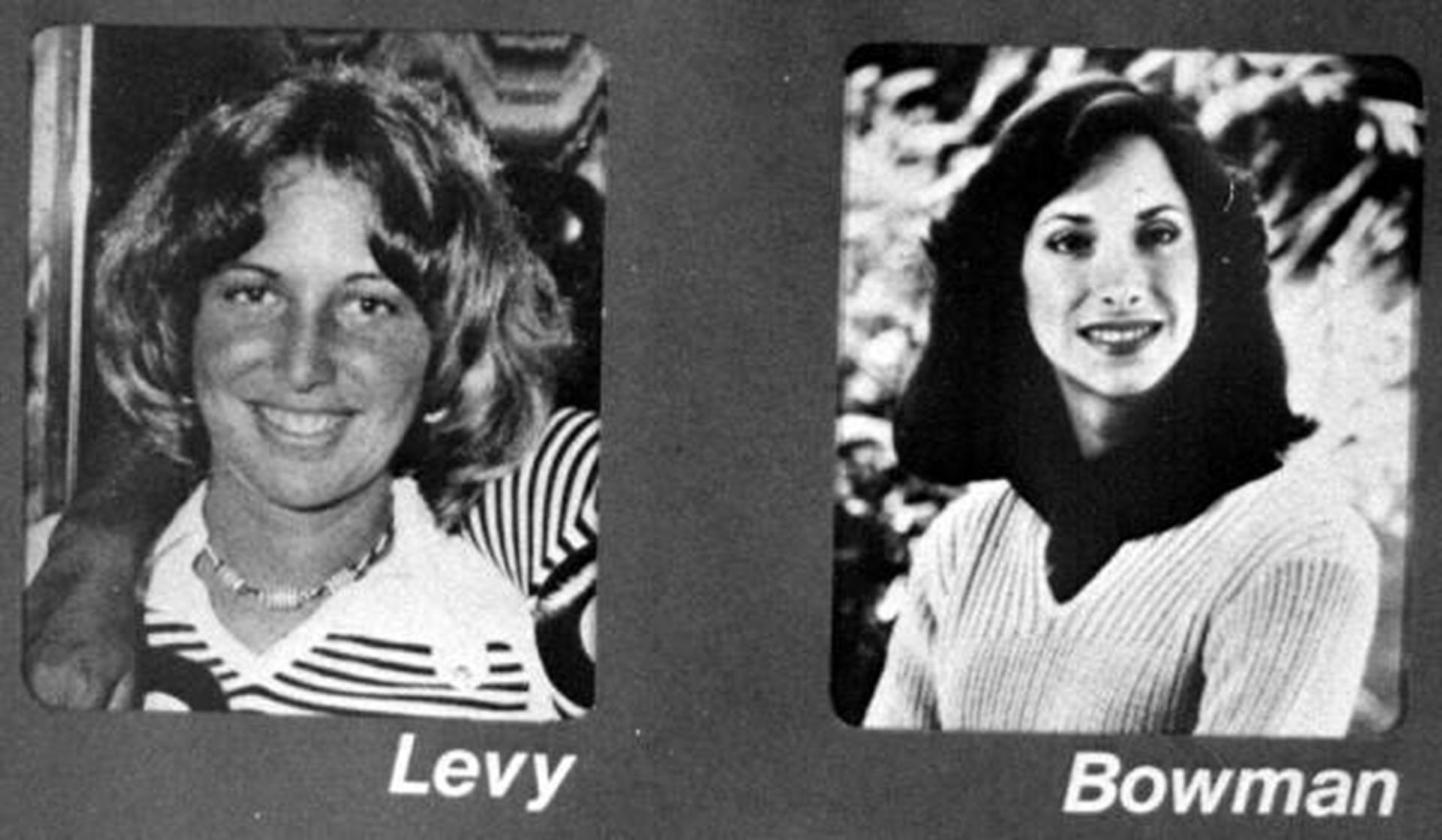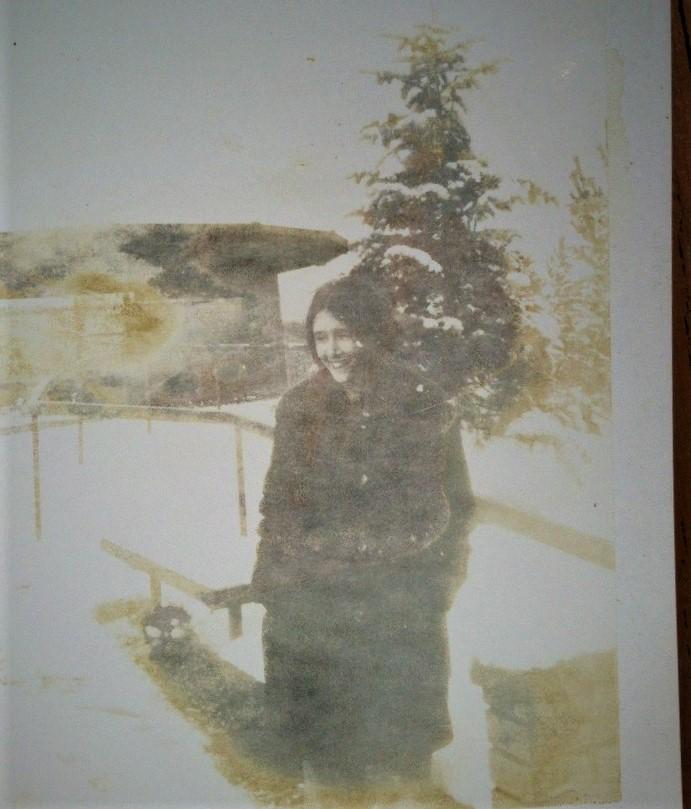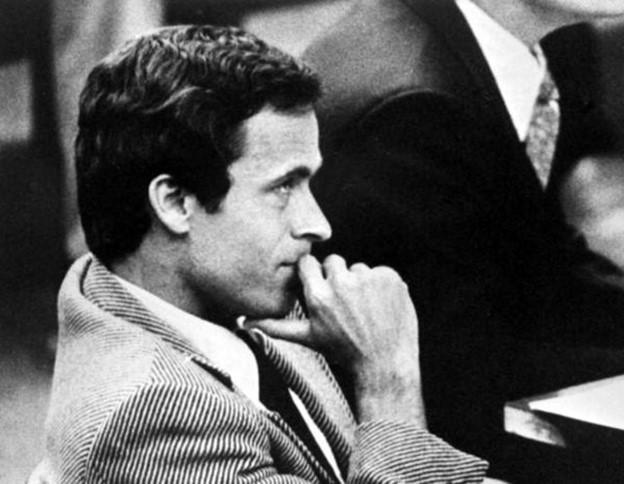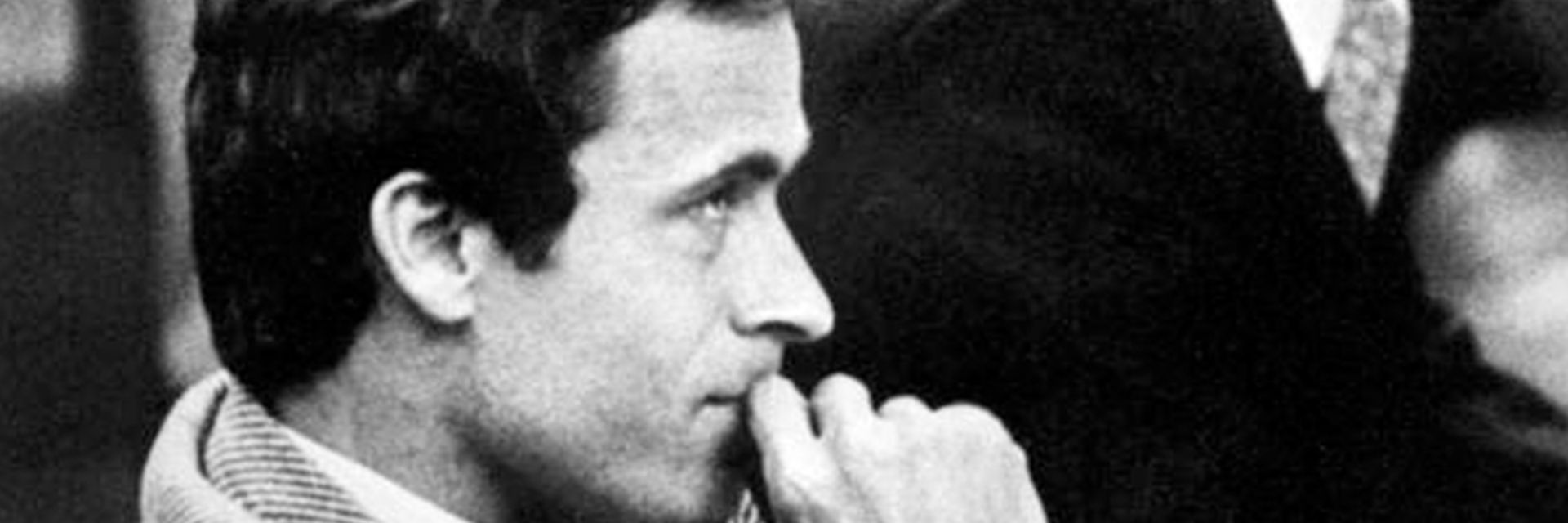



I have a bit of a Ted Bundy obsession. But it’s not quite what you think.
◊
It was St. Patrick’s Day, 1996, and I was a 16-year-old studying at a local community college in the town of Bellingham, Washington. I was a gawky and idealistic girl, convinced I knew everything but still uncertain of who I was. I had a boyfriend (my first) and, to the chagrin of my parents, he rode a motorcycle. He’d take me on rides along Chuckanut Drive, a scenic byway that overlooks Puget Sound, part of the Salish Sea, and home of the great Pacific octopus.
My mother and I were visiting my grandmother, who lived on a remote island in a cozy bungalow sheltered by cedar trees. I don’t remember how the topic first came up, but the name Ted Bundy was mentioned over our meal of potatoes, cabbage, and corned beef. My grandmother, surrounded by her semi-feral cats and history books aligning the shelves, casually mentioned, “Oh, we knew Ted.”
Since that day, I’ve learned more about my now-late grandmother’s – and my own mother’s – acquaintance with a serial murderer. The story goes like this: Between the years of 1969 and 1972, my grandmother was attending the University of Washington in Seattle, taking psychology courses toward a degree in social work. In one class, she encountered an engaging man with smiling eyes who drove a cream-colored Volkswagen Beetle.
Bundy’s attendance at the university was sporadic. But during the time my grandmother and Bundy’s enrollment overlapped, I’m told Ted parked his car outside my grandmother’s home, and the pair would walk to campus together. On other occasions, Ted visited the house to study with my grandmother and accompanied my family members to Lake Sammamish for picnics.
My mother was 17 at the time. She had long dark hair, parted down the middle. Having no consistent father figure in her life (my late grandfather had remarried and preferred the company of his violin), my mother was drawn toward her mother’s affable friend. Ted was protective of my mother, warning her to be careful and never get into a car with a stranger. He would sometimes drive her to and from her classes at Garfield High School, the two chatting about life, youth, music, and my mother’s future aspirations.
“Ted was such a nice, friendly, talkative person,” my mother tells me. “He was funny, he was charming ... he listened really well. He was fine with our dogs. He was a person I would have chosen to spend time with.” She even recalls that their November birthdays were a day apart.
In 1974, Ted went on to attend the University of Puget Sound before relocating to Salt Lake City to resume his studies at the University of Utah Law School.
Eventually, my grandmother fell out of communication with Ted, although I imagine, had this been the age of Facebook, they might have continued to share moments and milestones from their lives.
Instead, it would be years before they heard Ted’s name mentioned again.
To get inside the minds of notorious serial murderers, watch Conversations with a Serial Killer on MagellanTV.
A Timeline of Bundy’s Crimes and Escapes
All told, Ted Bundy confessed to killing 30 victims (there could be many more). His first documented attack took place in 1974, when he bludgeoned University of Washington student Karen Sparks; she survived, but had no memory of the attack. That year, he also murdered college students Lynda Ann Healy, Janice Ott, and Denise Mashind.
After relocating to Utah, Bundy continued killing. In 1974, he posed as a police officer and attempted to kidnap 18-year-old Carol DaRonch from a mall. She got away, but that same day, Bundy murdered 17-year-old Debra Kent. His rampage continued into Colorado in 1975, where he killed at least three other women, including Caryn Campbell.
Bundy was arrested in Utah in 1975 after a police officer discovered suspicious items, including a ski mask and handcuffs, in his vehicle. He was initially released but then identified by Carol DaRonch and two other women in a police lineup and was arrested on charges of attempted kidnapping. He was later charged with the first-degree murder of Campbell.
While awaiting trial in Aspen, Colorado, Bundy charmed his way into certain privileges. Left unshackled and unsupervised at the law library of the Pitkin County Courthouse, he escaped by jumping from a second-story window. Free and on the run for six days, he was found driving a stolen vehicle in Aspen and again taken into custody.

 Bundy victims Lisa Levy and Margaret Bowman (Source: Wikimedia Commons)
Bundy victims Lisa Levy and Margaret Bowman (Source: Wikimedia Commons)
After being moved to a prison in Glenwood Springs, Colorado, Bundy squeezed into the duct system and exited via a prison worker’s apartment. Had he not managed that escape, the lives of three additional victims would have been spared. Fleeing to Florida, Bundy invaded a sorority house at Florida State University, where he killed students Lisa Levy and Margaret Bowman. He seriously injured Kathy Kleiner and Karen Chandler, then entered a second residence and assaulted student Cheryl Thomas.
Bundy’s final victim was also his youngest. On February 9, 1978, he abducted and killed 12-year-old Kimberly Leach, leaving her body beneath a shed in Suwannee River State Park. Not long after that murder, he was pulled over in another stolen car and admitted to his true identity.
A Disturbing Piece of Family Lore
While initially gobsmacked (and, admittedly, a bit delighted) by the grim piece of family history I learned that St. Patrick’s Day, it receded to the back of my mind.

My mom in Washington State, circa 1973.
In 1998, I moved to Oregon, where I worked as a canvasser for the nonprofit organization OSPIRG (Oregon State Public Interest Research Group). I went door-to-door soliciting donations for environmental causes. As employees, we were expressly forbidden from entering homes, but I did on several occasions. I once watched an episode of Rosanne with an elderly woman who offered me glasses of fruit punch and idly chatted to me about her garden. Another time, a grieving couple invited me inside their suburban home, tearfully telling me I reminded them of their recently deceased daughter.
Socially, I crossed paths with a much older man who conformed to everything I wanted him to be. His days “researching” at the library were spent in pursuit of knowledge and definitely not surfing porn sites. His life “on the road” was because he was in bands, not because he’d burned bridges everywhere he went. And his interest in me was for reasons beyond the fact I was barely of age and vulnerable, still reeling from my first big breakup. Luckily, that entanglement led only to a shattered heart, wounded pride and, I suppose, a renewed appreciation for how easy it is to be duped by a practiced liar.
Around this time, I began researching the life and crimes of Ted Bundy. I read Anne Rule’s famed Bundy book, The Stranger Beside Me. I certainly wasn’t thinking about Bundy’s victims. Instead, it was a morbid thrill to ponder: What if my mother had been unfortunate enough to see the monstrous side of the talkative and endearing family friend?
What Kind of Man?
We like to think we can rely on gut instinct, or that warning signs will flash like signals at a railroad crossing. But Ted Bundy was notoriously unassuming. Before pursuing a law degree, he flirted with politics, attending the 1968 Republican National Convention as a Rockefeller delegate. He even worked at a suicide hotline in Seattle. He was also calculating, luring a number of his victims by feigning a broken arm and requesting assistance with lifting items into his car. Who would suspect a friendly, injured man sheepishly asking for help?
While Bundy’s brutality is not in question, psychologist Dorothy Otnow Lewis has theorized that Bundy actually had dissociative identity disorder. In 1980, as Bundy sat on death row, journalists Stephen Michaud and Hugh Aynesworth interviewed him extensively. The inmate initially deflects responsibility. He referred to the perpetrator of his crimes as alternately “the individual” and “the entity.”
Could there be truth to the diagnosis of dissociative identity disorder? Or might this be a tidy explanation for a more terrifying truth: that serial killers and psychopaths may first appear nondescript? That they may, in fact, be our neighbors and friends?
In attempting to understand the machinations of Ted Bundy, perhaps the best resource is Bundy himself. In another recorded interview with Michaud and Aynesworth, Bundy spoke less elusively about his crimes, saying, “I’m not an animal, I’m not crazy. I don’t have a split personality. I’m just a normal individual.”
Someone They Thought They Knew
The years pass: It’s late 2021. I live in New York now, and it’s the first time I have visited my mother since the COVID pandemic began. We sit on the creaky porch of my childhood home. My father died a few months before, so as we talk freely of this and that, we spill tears. All along there is the unlikely specter of a serial killer. It has always puzzled me how my mother speaks about Ted: almost with a tone of wistfulness – until I realize that her fondness is instead about a particular era of her adolescence: Jimi Hendrix and Janis Joplin were playing on the radio. While their lives were cut short, my mother’s path still lay gloriously before her.
In a moment of candor, my mother’s tone turns somber.
“There was something,” she recalls. “Ted’s eyes would get really wide sometimes. Maybe when he was lying, I don’t know.”


(Source: Wikimedia Commons)
When my mother and grandmother learned of Ted’s guilt, it was earth-rattling. In fact, it would be years before they accepted that someone they had known, trusted, and liked, had murdered, tortured, and raped multiple victims. My mother reflects on watching news stories of Bundy’s arrest, conviction, and eventual execution. There’s dark humor there, a familiar coping mechanism in my family. “Grandma and I were never mentioned … I guess because we managed to stay alive.”
Though I’ve long thought about my family’s connection to one of the most notorious serial killers of all time, I wasn’t prepared to write about it. The last thing I want to do is further contribute to the fetishization of an infamous murderer.
While Ted Bundy may be a source of entertainment for many, that’s certainly not the case for victims’ living families or for those few who got away. As Bundy survivor, Carol DaRonch told People in 2019, “It is still hard for me to talk about his victims and their families. … Bundy destroyed a lot of lives, and I came so close.” Though the trauma he inflicted lives on, the beast is long dead.
Now, more than 50 years after Bundy would drive my mother to school, I’ve come to think differently about the circumstances. Rather than being potential victims of Bundy, I believe that acquaintances like my mother and my grandmother were a part of Bundy’s cover; unbeknownst to them at the time, they helped form the veneer of normalcy necessary to allow his true nature to go undetected.
True Crime and the Bundy Fascination



Ted Bundy at trial. (Source: Wikimedia Commons)
After a televised trial, during which Bundy brazenly represented himself, Bundy was sentenced to death. He was executed on January 24, 1989.
Still, the fascination with Ted Bundy is alive and well. Numerous documentaries and shows have shed new light on Bundy’s crimes. The broader interest in true crime is complicated, and there’s no single explanation for its draw. But, at least in my case, and this is difficult to admit, my Ted Bundy obsession is less about Bundy himself, and it’s not about the victims: it’s more about me. Because, though I’ve heard the words my own kin use to describe their initial impressions of Bundy – as warm, gregarious, a substitute father figure – I still like to think I might have seen beyond the mask. In other words, I hold tight to a familiar, and perhaps dangerous, illusion: that it could never happen to me. It’s an assumption far more consoling than the alternative: that for some who live among us, the exterior fleece too perfectly conceals the wolf residing underneath.
Ω
Matia Query is a freelance writer and the editor of BookLife, the indie author wing of Publishers Weekly. She lives in New York’s Hudson Valley.
Title image via Wikimedia Commons

